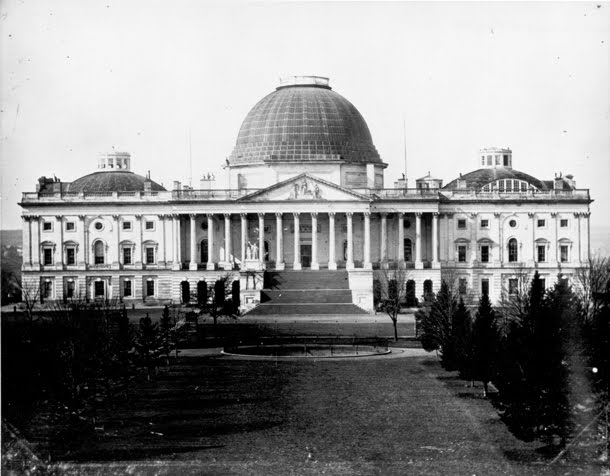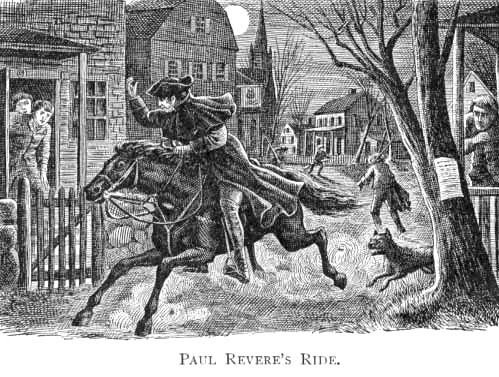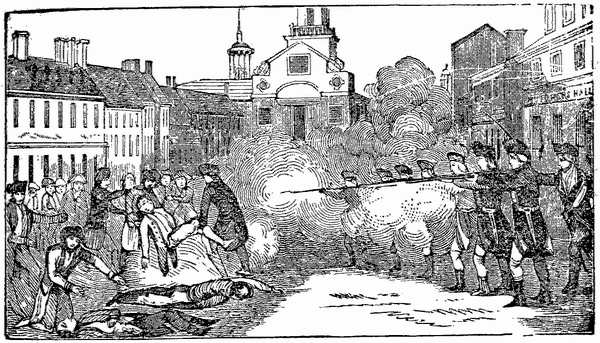From The Tenth Amendment Center:
Judicial Supremacy or State Nullification?
by Marty Babitz, New Jersey Tenth Amendment Center
There was a time, in the early days of our Constitutional Republic, that the forces of monarchy and tyranny ran deeper than perhaps even today. In 1798, our would-be King John Adams and his Federalist henchmen in Congress trumped up war fever, a tyrant’s best friend, to pass a Sedition Law that made criticism of the President and Congress, interestingly the very ones who enacted this law, a jailable offense.
Vice President Thomas Jefferson, an opponent of the Federalists, who was inconveniently omitted from the protection of this law, jumped into action, but secretly for fear of the Federalists and prison where many of his colleagues in government and the press had been sent under this nefarious law.
Jefferson and James Madison drafted Resolutions that were passed by the Kentucky and Virginia legislatures respectively, whose principles can be summarized by this statement from Jefferson’s pen appearing in the Kentucky version:
“The principle and construction contended for that the general government is the exclusive judge of the extent of the powers delegated to it, stop nothing short of despotism – since the discretion of those who administer the government, and not the constitution, would be the measure of their powers: That the several states who formed that instrument, being sovereign and independent, have the unquestionable right to judge of its infraction, and that a NULLIFICATION by those sovereignties, of all unauthorized acts done under color of that instrument, is the rightful remedy.”
Many would assert the Constitution’s Supremacy Clause against the above, which provides that the Constitution and federal laws made pursuant to it are the supreme law of the land. But that clause instead unequivocally proves the validity of the Virginia and Kentucky Resolutions: if a federal law is not made pursuant to the Constitution, but is rather an invalid unconstitutional law, then it is not the supreme law of the land; it is not a law at all, and is therefore null and void.
What happened in the last 212 years that has kept these Principles of ’98 out of our consciousness? One of the key answers to this question contains the means by which to make the nullification movement far more effective going forward.
Over the past decades, every attorney and judge learns “Constitutional law” in our Law Schools, the bastions of nationalists and judicial supremacists. When we show up for our first day of class, we are not given the Constitution, even though it consists of about 7,500 words and we are otherwise expected to read tens of thousands of words nightly. Instead, we receive a very thick textbook, loaded with Opinions issued by the United States Supreme Court. We are told by our Professor that the Constitution is a living document, one that the Supreme Court breathes life into by interpreting, constructing and discerning the true meaning through consulting whatever they deem appropriate in their discretion, including changing societal trends, studies by Sociologists, international law and the like.
And to prove that this is the correct, valid, procedure for “making” Constitutional law, the very first case assigned is the one termed the most important in our history, the landmark 1803 case of Marbury v. Madison. Many Americans have heard of this celebrated case. Why?
Because in that case, Chief Justice John Marshall stated that the Supreme Court was duty bound, under the oath each Justice takes to support the Constitution, to treat unconstitutional laws of Congress as void, and of no force or effect.
Of course, Marshall’s ruling is an exact repeat of the very same principle found in those principles of ’98. Every judge, every Congressperson, every President, Governor and state legislator, in both levels of government, take that oath to support the Constitution.
The Marbury v. Madison ruling confirmed the same principle as the Virginia and Kentucky Resolutions: any federal or state government official is duty-bound under his or her oath, required by Article VI of the Constitution, to uphold the Constitution, and therefore must treat any unconstitutional law, action, or ruling of another branch of either level of government as void, and of no force or effect.
In other words, the very bedrock of the Supreme Court’s assertion of the power to nullify federal or state laws is identical to the one found in the Virginia and Kentucky Resolutions.
So how did the legal and judicial profession, and correspondingly most Americans, become conditioned to believe that his duty of nullification was exclusively reserved to the Supreme Court alone? Because the same essential principle, contained in the Virginia and Kentucky Resolutions, was lambasted by Federalists, desiring absolute national supremacy, as dangerous and wrong in the hands of the state legislatures as representatives of the sovereign people. But the same assertion was magically labeled “judicial review” when announced by the Chief Justice Marshall just five years later, implying a special supreme exclusive power carved out solely for those un-elected, life-tenured, completely unaccountable oracles on the Supreme Court.
Soon after Marbury v. Madison, the concept of judicial review was applied to the review of state laws, with the result that over the past two hundred years a small handful of federal laws have been invalidated by the Supreme Court while scores of state laws and rulings have been overturned.
Of course, when lawyers and judges complete law school without even reading the Constitution, instead learning from the vaunted faculty that the Constitution makes the Supreme Court the exclusive arbiter of that document, you are conditioned to believe it. And if lawyers and judges are so conditioned, then so will everyone, taking their cue from the respected legal and judicial profession allegedly charged with guarding our sacred Constitution. Of course, beyond the conditioning, there is a tremendous incentive for those in the legal field, particularly aspiring judges and Constitutional lawyers, to accept this alleged principle because it transfers power from the Constitution and sovereign people of the United States to them!
In fact, however, there is nothing in Marbury v. Madison to warrant such a supremacy, merely a statement that the Supreme Court, like any other branch of federal or state government, has the authority and duty of Constitutional review in determining whether another branch of its level, or the other level, of government has acted beyond the scope of its powers and infringed on the powers of the other.
In fact, it was not until 1958 that the Supreme Court finally found the audacity to boldly assert that it was, in fact, the sole, exclusive authority on the Constitution. In Cooper v. Aaron, the Court stated that Marbury v. Madison “declared the basic principle that the federal judiciary is supreme in the exposition of the law of the Constitution” and claimed that this alleged principle of judicial supremacy “has ever since been respected by this Court and the Country as a permanent and indispensable feature of our constitutional system.” And like sheep, we all believed this fraud – one that had been implicitly building for decades. But now, with this so-called “principle” clearly and authoritatively stated by the Court, a wave of even more overreaching violations of our sovereign right of republican self-government came down from on high.
Judicial supremacy has also created the toxic notion of judicial infallibility. In Planned Parenthood of Southeastern Pennsylvania v. Casey (1992), the Supreme Court refused to overturn its precedent regarding the right to abortion in Roe v. Wade on the basis that doing so would damage the rule of law and correspondingly undermine the Court’s legitimacy. The Court also cited the fact that people had come to rely on Roe. Thus, in the Court’s view, the correctness of Roe was not as important as the source, the Court itself, and the people’s reliance on the Court as if it were the Constitution itself. Only a supreme authority such as a monarch or British parliament, rejected by the American Revolution and Declaration of Independence, would assert that its credibility and unquestioned supremacy is paramount to the correctness of its edicts.
Meanwhile, and of equal importance, the Supreme Court, in its alleged role of neutral supreme arbiter of the Constitution, while striking down countless state laws, has rubber stamped the other two branches of its own federal government, the President and Congress, giving them carte blanche to do whatever they please, as we have so clearly witnessed increasingly over our own lifetimes.
So much activity to restore liberty and restrain the federal government has been misallocated toward obtaining the right Justices on the Supreme Court, and petitioning the Court to make the right decisions. We are playing the wrong game with the wrong chips, based on the erroneous concept that the Supreme Court, a branch of the federal government, is the exclusive arbiter of the Constitution and the scope of the powers it delegates to the federal government on the one hand, and reserves to the states and their people on the other.
We must topple this fiction, so deeply ingrained in the legal profession, our history books, and the collective mind of We the People, that Marbury v. Madison vested supremacy over the Constitution in the Supreme Court, when in reality it merely repeated the same principle declared five years earlier in the Virginia and Kentucky Resolutions of 1798: an unconstitutional law, action or ruling of the federal government is null and void, and the duty of every state governor, legislature, and court, under the oath they have taken to support the Constitution, is to so nullify it.
Marty Babitz is on the chapter leadership team for the New Jersey Tenth Amendment Center. He is the author of The Illusion of Freedom: How to Restore the True Constitution and Reclaim Liberty Now.
Copyright © 2010 by TenthAmendmentCenter.com. Permission to reprint in whole or in part is gladly granted, provided full credit is given
Wednesday, July 21, 2010
Subscribe to:
Post Comments (Atom)
.gif)






























No comments:
Post a Comment